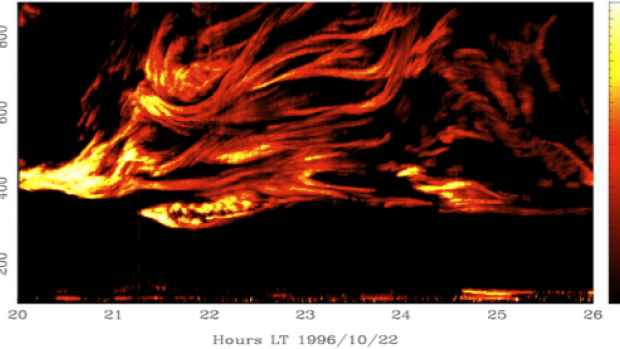
Ionospheric scintillation is the rapid modification of radio waves caused by small scale structures in the ionosphere. Severe scintillation conditions can prevent a GPS receiver from locking on to the signal and can make it impossible to calculate a position. Less severe scintillation conditions can reduce the accuracy and the confidence of positioning results.
Scintillation of radio waves impacts the power and phase of the radio signal. Scintillation is caused by small-scale (tens of meters to tens of km) structure in the ionospheric electron density along the signal path and is the result of interference of refracted and/or diffracted (scattered) waves. Scintillation is usually quantified by two indexes: S4 for amplitude scintillation and σφ (sigma-phi) for phase scintillation. The indexes reflect the variability of the signal over a period of time, usually one minute. Scintillation is more prevalent at low and high latitudes, but mid-latitudes, such as the United States, experience scintillation much less frequently. Scintillation is a strong function of local time, season, geomagnetic activity, and solar cycle, but it is also influenced by waves propagating from the lower atmosphere.
Image courtesy of Geospace Research Center, Nagoya University